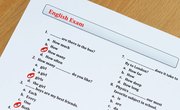In English sentences are written with a subject S, a verb V, and an object O. The subject and the object are both nouns. The easy way to understand this point in grammar is by remembering that it is the subject that does the verb to the object. These parts in a sentence can be picked out easily if you approach the sentence in sections.
Read the sentence as a whole without stopping, for instance, 'Jimmy threw the ball'. First of all we know that the order will most probably be SVO and the easiest part of speech to recognize is the verb V, because it is the word that describes the action. In this case it is 'Threw'.
Find the subject by asking yourself who threw? In other words does the sentence tell us who was doing the throwing in the sentence and the answer has to be that 'Jimmy' threw, so therefore 'Jimmy' is the subject S.
Find the object by using the answers you already, since you know the verb 'threw' and the subject 'Jimmy'. Now ask yourself if Jimmy threw, then what did he throw? He threw the ball, and so 'ball', is the object in this sentence. So the complete equation or rule will be that the subject S does the verb V to the object O.
Find other parts of speech, for example adjectives, adverbs, and prepositions, in a similar way, but the basic form of a sentence will always be in the Subject Verb and Object. Remember if group of words does not have SVO, it is not a sentence but a phrase.
Tip
Check for the verb first
Tip
Then who did the verb
Tip
Who was the verb done to
Related Articles
Tips
- Check for the verb first
- Then who did the verb
- Who was the verb done to
Writer Bio
This article was written by the CareerTrend team, copy edited and fact checked through a multi-point auditing system, in efforts to ensure our readers only receive the best information. To submit your questions or ideas, or to simply learn more about CareerTrend, contact us [here](http://careertrend.com/about-us).









